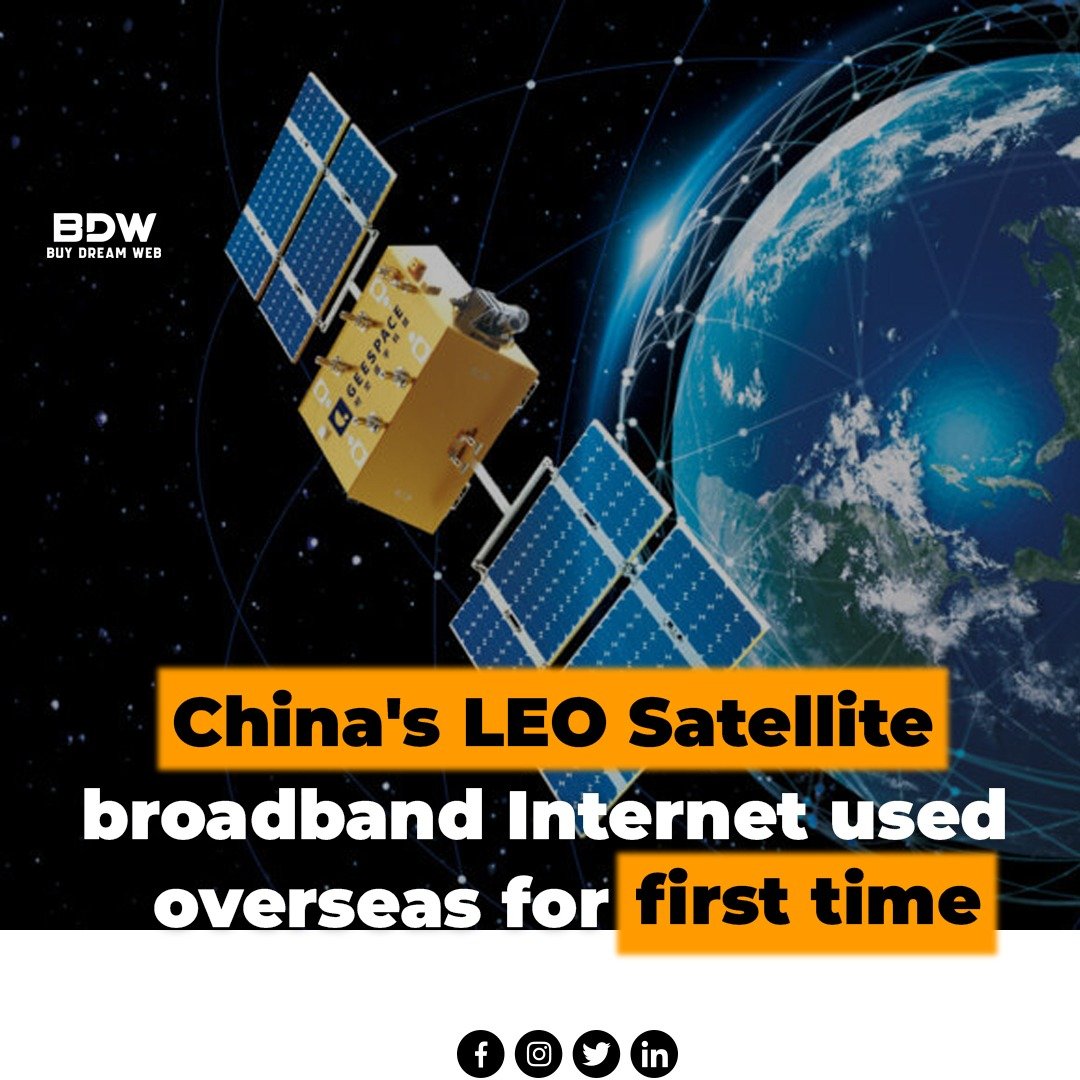China’s LEO Satellites Take Flight: A First Look at Global Broadband from the Heavens
The internet, once a luxury for the developed world, is now an essential tool for education, communication, and economic development. Yet, millions remain unconnected, especially in remote areas with limited terrestrial infrastructure. Enter China’s foray into Low-Earth Orbit (LEO) satellite internet – a potential game-changer for global connectivity.
This blog dives deep into this recent development, exploring the technology, its potential impact, and the challenges and competition China faces in this rapidly evolving space.
LEO Satellites: Bringing the Internet Closer
Traditional satellite internet relies on geostationary giants perched 36,000 kilometers above Earth. While offering broad coverage, the distance creates latency – the time it takes for data to travel back and forth, leading to frustrating lag and slow download speeds. LEO satellites, on the other hand, orbit much closer (between 200 and 2,000 kilometers). This proximity significantly reduces latency, offering faster and more responsive internet access.
Imagine streaming video without buffering or participating in real-time video conferences without frustrating delays. LEO constellations, networks of numerous LEO satellites working together, promise to fill these connectivity gaps.
China’s LEO Trial: A Glimpse into the Future
The recent trial in Thailand signifies a critical milestone. A private Chinese space company, GalaxySpace, collaborated with Mahanakorn University of Technology to test China’s LEO internet technology for the first time overseas. The project focused on establishing a ground test station to observe the communication capabilities of millimeter-wave satellite signals under local weather conditions.
This successful trial highlights China’s ambition to become a major player in the global space race. It could pave the way for wider deployment of LEO constellations, offering internet access to underserved areas with limited terrestrial infrastructure. Imagine connecting villages in the Amazon rainforest, isolated islands in the Pacific, or remote regions of Africa – the possibilities for bridging the digital divide are immense.
Beyond Connectivity: A World of Possibilities
The potential benefits of China’s LEO internet extend far beyond geographical reach:
- Bridging the Digital Divide: Millions lack access to reliable internet, hindering education, healthcare, and communication. LEO constellations could bridge this gap, offering basic internet connectivity for education, telemedicine, and communication in underserved regions.
- Disaster Response Gets a Boost: Natural disasters often disrupt communication infrastructure. LEO internet could provide a more resilient communication channel, facilitating faster response efforts and aiding recovery.
- Fuelling Innovation: Advancements like autonomous vehicles and the Internet of Things (IoT) rely heavily on fast and reliable internet. LEO constellations could provide the necessary infrastructure for these technologies to flourish globally.
Challenges and Competition: A Busy Orbit
Despite the promise, China’s LEO venture faces significant challenges:
- Cost and Sustainability: Deploying and maintaining large LEO constellations is a hefty investment. Additionally, the environmental impact of launching numerous satellites necessitates careful consideration.
- Regulation and Geopolitics: International cooperation and clear regulations are crucial to manage the increasing number of satellites in orbit and avoid potential collisions.
- A Crowded Market: Existing players like SpaceX’s Starlink constellation and planned projects from Amazon and OneWeb are all vying for a piece of the LEO internet market.
This competition could lead to faster innovation and potentially lower costs for consumers. However, it also raises concerns about potential data security issues and geopolitical considerations surrounding China’s involvement.
The Future of LEO Internet: Collaboration is Key
China’s LEO satellite internet trial signifies a significant step towards a more connected world. However, to truly unlock its potential, international cooperation is vital:
- Fostering Responsible Development: International collaboration can establish protocols for sustainable satellite development and deployment, minimizing environmental impact.
- Building a Regulatory Framework: Clear regulations can manage the increasing number of satellites in orbit, preventing collisions and ensuring safe operation.
- Addressing Data Privacy: Transparent discussions are needed to address data privacy concerns and ensure user trust in LEO internet services.
Conclusion: A New Dawn for Global Connectivity
China’s LEO satellite trial marks a new dawn for global internet access. The potential benefits for bridging the digital divide, enabling disaster response, and supporting technological advancements are undeniable. While challenges exist, collaboration among nations can pave the way for a future where fast, reliable internet is no longer a privilege, but a basic right for all.
This journey is just beginning. As China refines its LEO technology and competition intensifies, consumers can expect faster speeds, wider coverage, and potentially lower costs for internet services. The future of internet connectivity might very well be written in the stars, and China’s LEO satellites are set to play a leading role in this exciting new chapter.
Article Link: https://news.cgtn.com/

 +44 747720 4635
+44 747720 4635


Comments are closed